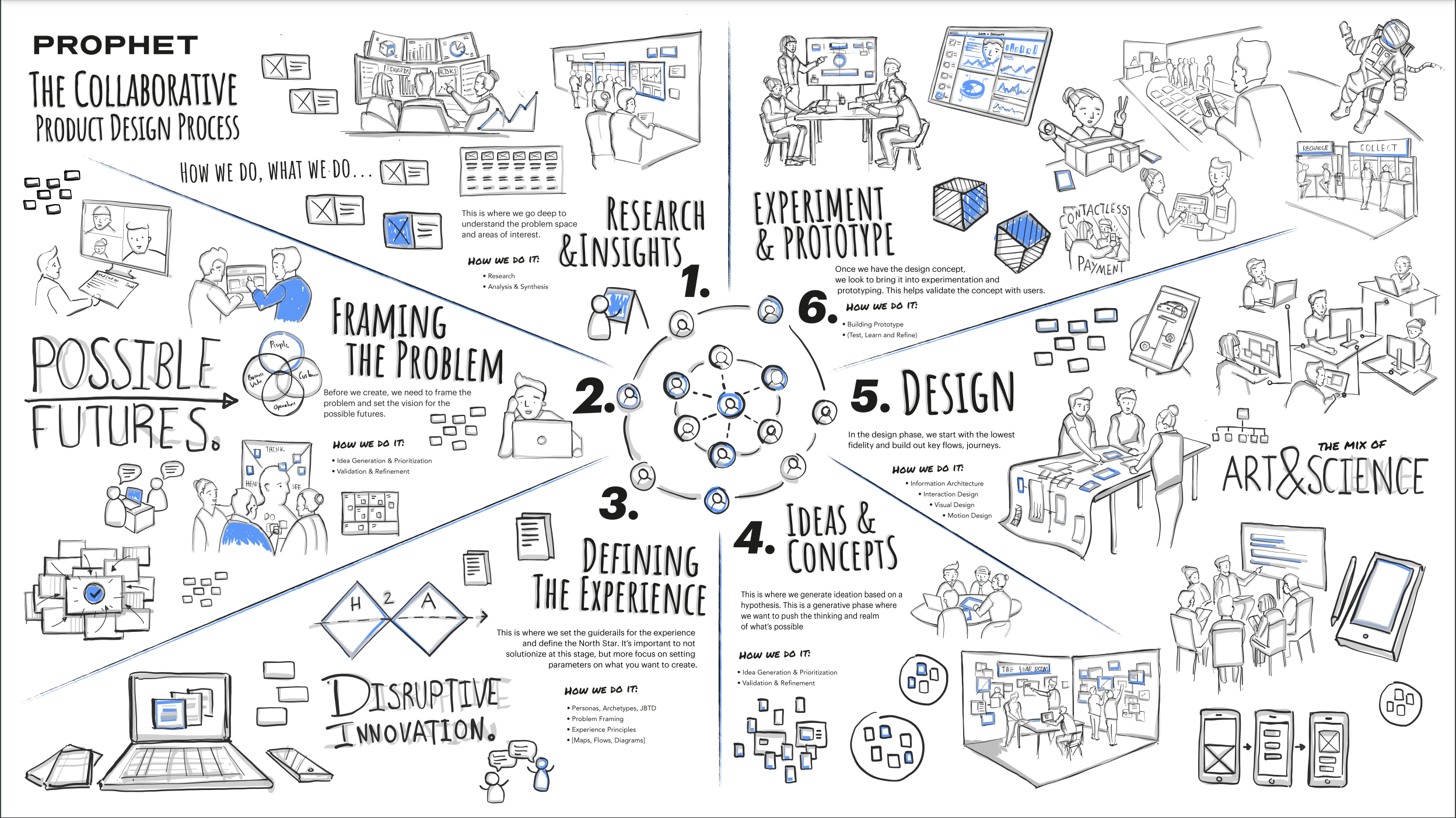BLOG
The Importance of a Collaborative Product Design Process
Design may be a team sport, but most companies need guidelines to make collaboration more effective.
Fostering cross-department and client collaboration in projects are critical through the design process to keep teams motivated, clients engaged and to ensure the forward momentum of the project. Such an approach also reduces friction and contributes to the well-being of the team.
At Prophet, our one-team approach is encouraged in all engagements with start-ups through to big corporations. The conclusion we’ve been able to draw is that the design and innovation process gains real momentum and buy-in with the involvement of cross-functional collaboration. But every organization is different and creating that space to empower teams is a frequently faced challenge, along with accessing stakeholders for decision-making and bringing the wider team along on the journey.
“The design and innovation process gains real momentum and buy-in with the involvement of cross-functional collaboration.”
Read on as we break down what collaborative design is, the benefits and offer our tips to encourage collaboration and foster creativity.
What is Collaborative Design?
Collaborative design is the process of designing as a team. Great products and experiences aren’t created in a vacuum. A diversity of profiles is needed, from designers, analysts, researchers, and product managers, fusing their talents and expertise leads to the creation of something truly meaningful and something that genuinely connects business and user needs.
The Benefits of Product Design Collaboration
There are many reasons why great products need great collaboration, here’s some of them:
- Shared goal or vision – all team members are kept well informed and on the same page throughout the process.
- Creative and innovative solutions – gathering feedback and considering diverse perspectives from a variety of specialized skillsets enable next-level solutions.
- It gives everyone a voice – collaboration is good for culture too. It helps to instill democracy within your creative process and signals that all voices matter.
- Greater buy-in – if you create a process where everybody has greater agency in contributing input, it makes it harder for team members to disengage.
- Saves time – continuous and open communication prevents misunderstandings and costly revisions so that the product can be brought to the development stage sooner.
A 6-Step Guide to Organize and Improve the Collaborative Design Process

Our Top Tips to Get Started
1. Cross-Function Teaming
The team is everything, and the more disciplines involved, the more robust the ideation, feedback and iteration. Even better, create a cross-level team, a good idea can come from anywhere.
2. Problem First
Focus on the problem first and be flexible on how you get to the solution. Align with the team on the outcomes that you are trying to drive and let the team be flexible with the process.
3. A Flat Planet
Design is a team sport, and with that, the team should be empowered to move, design and dictate the course of the project. A hierarchical approach will slow sign-offs, meeting availabilities and permission to move forward. Empower the team, do great work.
4. Rhythm is Everything
Working together at a similar pace is key. Set a cadence that works for the project and the team’s wellbeing. Consider the teams’ lifestyles as they are as – if not more – important as the project plan itself.
5. Team Health
Carve out the space and time to run team retrospectives and have open conversations about team health. At Prophet, our teams use a framework called SCARFS – standing for Status, Certainty, Autonomy, Relatedness, Fairness and Sustainability – to help guide those conversations. Every week, each team member rates how they feel on each factor on a scale between one and five. This is critical to understand the health of the project and the team. Often this moment of reflection will provide a deeper insight to refine the process for upcoming sprints.
6. A Vision of the Future
Have a brave vision of the future, challenge the team to look beyond the project and deeply question the future state and impact that the work will have.
FINAL THOUGHTS
Collaborative design should be standard practice through the product creation process with a focus on solving a true user need. Done right, design collaboration empowers everyone involved with the mindset and process to come together and build a better product – even the best specialist can’t design great products alone, that’s why collaboration is so fundamental.
If you need help on how to adopt or improve your design collaboration workflow or approach to product design, get in touch with our Innovation & Experience experts today.
